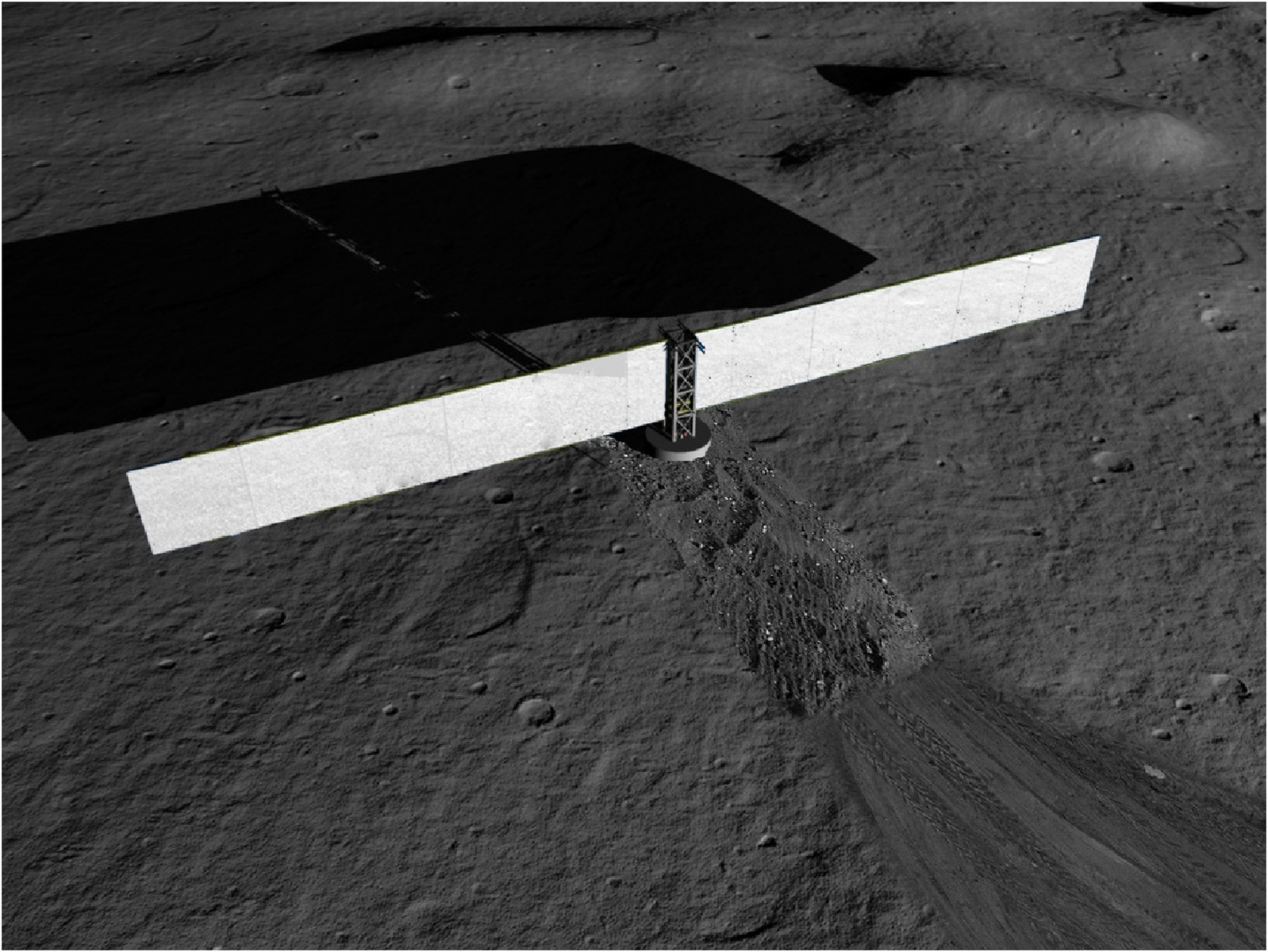[/caption]
When astronauts return to the moon for long duration missions, they will need reliable sources of power. Solar energy will be plentiful for the 14 Earth-day- long lunar daytime, but what about the equally as long lunar night? NASA engineers are exploring the possibility of nuclear fission to provide the necessary power. If you're having visions of a Three Mile Island nuclear reactor on the moon, put your fears to rest. A nuclear reactor used in space is much different than Earth-based systems, says Lee Mason of the NASA Glenn Research Center, who is the principal investigator for testing a fission powered system for the moon. There are no large concrete cooling towers, and the reactor is about the size of an office trash can. Of course, it won't produce as much energy as the big reactors on Earth, but it should be more than adequate for the projected power needs of a lunar outpost.
"Our goal is to build a technology demonstration unit with all the major components of a fission surface power system and conduct non-nuclear, integrated system testing in a ground-based space simulation facility," said Mason. "Our long-term goal is to demonstrate technical readiness early in the next decade, when NASA is expected to decide on the type of power system to be used on the lunar surface."
A fission surface power system on the moon has the potential to generate a steady 40 kilowatts of electric power, enough for about eight houses on Earth. It works by splitting uranium atoms in a reactor to generate heat that then is converted into electric power. The fission surface power system can produce large amounts of power in harsh environments, like those on the surface of the moon or Mars, because it does not rely on sunlight. The primary components of fission surface power systems are a heat source, power conversion, heat rejection and power conditioning, and distribution.
Glenn recently contracted for the design and analysis of two different types of advanced power conversion units as an early step in the development of a full system-level technology demonstration. These power conversion units are necessary to process the heat produced by the nuclear reactor and efficiently convert it to electrical power.
Two different companies have designed concepts that can produce a total of 12 kilowatts of power. One uses piston engines and the other a high speed turbine coupled with a rotary alternator.
"Development and testing of the power conversion unit will be a key factor in demonstrating the readiness of fission surface power technology and provide NASA with viable and cost-effective options for nuclear power on the moon and Mars," said Don Palac, manager of Glenn's Fission Surface Power Project.
A contractor will be selected after a year of design and analysis. Testing of the non-nuclear system is expected to take place in 2012 or 2013 to verify the performance and safety of the systems and determine if these systems can easily be used on the moon, or even on Mars.
Source:
NASA
 Universe Today
Universe Today
